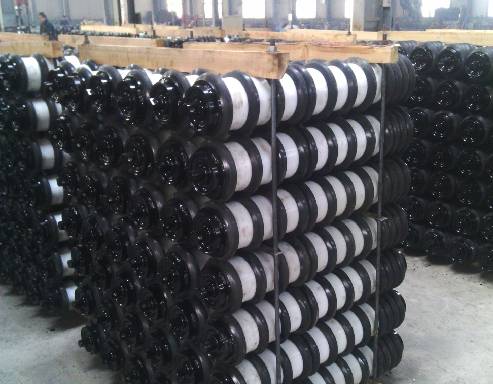 Afrikaans
Afrikaans  Albanian
Albanian  Amharic
Amharic  Arabic
Arabic  Armenian
Armenian  Azerbaijani
Azerbaijani  Basque
Basque  Belarusian
Belarusian  Bengali
Bengali  Bosnian
Bosnian  Bulgarian
Bulgarian  Catalan
Catalan  Cebuano
Cebuano  Corsican
Corsican  Croatian
Croatian  Czech
Czech  Danish
Danish  Dutch
Dutch  English
English  Esperanto
Esperanto  Estonian
Estonian  Finnish
Finnish  French
French  Frisian
Frisian  Galician
Galician  Georgian
Georgian  German
German  Greek
Greek  Gujarati
Gujarati  Haitian Creole
Haitian Creole  hausa
hausa  hawaiian
hawaiian  Hebrew
Hebrew  Hindi
Hindi  Miao
Miao  Hungarian
Hungarian  Icelandic
Icelandic  igbo
igbo  Indonesian
Indonesian  irish
irish  Italian
Italian  Japanese
Japanese  Javanese
Javanese  Kannada
Kannada  kazakh
kazakh  Khmer
Khmer  Rwandese
Rwandese  Korean
Korean  Kurdish
Kurdish  Kyrgyz
Kyrgyz  Lao
Lao  Latin
Latin  Latvian
Latvian  Lithuanian
Lithuanian  Luxembourgish
Luxembourgish  Macedonian
Macedonian  Malgashi
Malgashi  Malay
Malay  Malayalam
Malayalam  Maltese
Maltese  Maori
Maori  Marathi
Marathi  Mongolian
Mongolian  Myanmar
Myanmar  Nepali
Nepali  Norwegian
Norwegian  Norwegian
Norwegian  Occitan
Occitan  Pashto
Pashto  Persian
Persian  Polish
Polish  Portuguese
Portuguese  Punjabi
Punjabi  Romanian
Romanian  Russian
Russian  Samoan
Samoan  Scottish Gaelic
Scottish Gaelic  Serbian
Serbian  Sesotho
Sesotho  Shona
Shona  Sindhi
Sindhi  Sinhala
Sinhala  Slovak
Slovak  Slovenian
Slovenian  Somali
Somali  Spanish
Spanish  Sundanese
Sundanese  Swahili
Swahili  Swedish
Swedish  Tagalog
Tagalog  Tajik
Tajik  Tamil
Tamil  Tatar
Tatar  Telugu
Telugu  Thai
Thai  Turkish
Turkish  Turkmen
Turkmen  Ukrainian
Ukrainian  Urdu
Urdu  Uighur
Uighur  Uzbek
Uzbek  Vietnamese
Vietnamese  Welsh
Welsh  Bantu
Bantu  Yiddish
Yiddish  Yoruba
Yoruba  Zulu
Zulu components of conveyor system
Components of a Conveyor System
A conveyor system is an essential component in many industrial environments, playing a crucial role in transporting materials efficiently. Understanding the key components of a conveyor system is vital for effective design, operation, and maintenance. This article explores the various elements that contribute to the functionality of a conveyor system.
1. Conveyor Belt At the heart of any conveyor system is the conveyor belt. This continuous loop of material is designed to transport goods from one point to another. Conveyor belts can be made from various materials, including rubber, metal, or fabric, and their design varies depending on the application. For instance, some belts are designed for heavy loads, while others are built for smaller items or fragile goods.
Components of a Conveyor System
3. Rollers and Pulleys Rollers and pulleys play a critical role in the support and movement of the conveyor belt. Rollers facilitate the movement of the belt and reduce friction, while pulleys are used to guide and change the direction of the conveyor belt. Both are essential for maintaining the belt's tension and ensuring smooth operation.
components of conveyor system

4. Framework The framework provides structural support for the entire conveyor system. It's typically made from steel or aluminum and is designed to withstand the weight of the materials being transported. A robust frame ensures stability and durability, which is crucial for maintaining operational efficiency over time.
5. Loading and Unloading Equipment To integrate effectively into a production line, conveyor systems require loading and unloading equipment. This can include chutes, hoppers, or automated systems that facilitate the easy transfer of materials onto and off the conveyor belt. Proper loading and unloading equipment is fundamental in minimizing operational bottlenecks.
6. Sensors and Control Systems Modern conveyor systems often incorporate sensors and advanced control systems to enhance functionality. Sensors can detect the presence of items on the belt, monitor speed, and ensure safe operation. Control systems can automate processes, optimize flow, and maintain consistent performance.
7. Safety Features Safety is paramount in any industrial operation, and conveyor systems are no exception. Safety features such as emergency stop buttons, guard rails, and warning lights are crucial for protecting workers and ensuring compliance with regulations.
In conclusion, a conveyor system is composed of several essential components that work together to ensure efficient material handling. Understanding these components helps in optimizing conveyor designs, improving operational efficiency, and maintaining safety in industrial environments. Whether in manufacturing, warehousing, or distribution, a well-designed conveyor system is vital for productivity and success.
-
Revolutionizing Conveyor Reliability with Advanced Rubber Lagging PulleysNewsJul.22,2025
-
Powering Precision and Durability with Expert Manufacturers of Conveyor ComponentsNewsJul.22,2025
-
Optimizing Conveyor Systems with Advanced Conveyor AccessoriesNewsJul.22,2025
-
Maximize Conveyor Efficiency with Quality Conveyor Idler PulleysNewsJul.22,2025
-
Future-Proof Your Conveyor System with High-Performance Polyurethane RollerNewsJul.22,2025
-
Driving Efficiency Forward with Quality Idlers and RollersNewsJul.22,2025





























